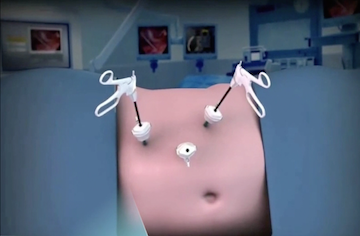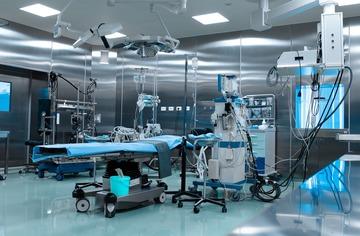— “But my PSA levels are not that high, doctor! Only slightly elevated! And you want to do a prostate biopsy straight away. Maybe we should wait?”- My patient is not happy.
— “Victor, when your PSA levels become considerably high the only aim of the investigation will be to confirm inoperable prostate cancer. And also, to confirm the fact that both you and I have made a big mistake. You by not agreeing to have a 10-minute procedure and ignoring the slight PSA elevation and I by not explaining to you the dangers of this elevation and how paramount the investigation is”
— But aren’t there any other methods of diagnosis? MRI? CT scans? I am not great with needles and have had a needle phobia since I was a child” – my patient looks embarrassed.
— Look, Victor. In the presence of increased PSA and free to general PSA ratio distortion together with a palpable thickened area in the prostate, the biopsy is necessary. You need to know and understand that this “slight elevation” might be a sign of a very small tumour which has not yet spread beyond the prostate. Sometimes a very small tumour takes up less than 1% of the prostate.
— Doctor, please understand that I am simply afraid. My brother had the same procedure and he complained a lot about bowel pain. And they never even found any tumour! Only during the repeat procedure 3 months later”. Victor frowns, it is clear these memories are painful for him. “And those three months were crucial…. PSA went up to 90 and my brother was deemed inoperable…It’s terrifying.
— Hang on a minute. When and how was your brother’s biopsy performed? – I am perplexed.
— About nine or ten years ago. As he told me, the surgeon inserted his finger up the back passage and the needle followed the finger. First there was a poke on the right, then on the left” – the patient frowns again.
— This method is very dated, Victor, - I say, getting a piece of paper and starting to draw a diagram of the prostate and the biopsy procedure with ultrasound control for him. Look, a special ultrasound probe is inserted into the rectum. We receive the image of the prostate 2 different perspectives. The probe is biplane which means we can precisely aim at specific areas of the prostate and take 10 to 12 samples which almost always rules out the need for the second biopsy. The needle passes through the probe port thus avoiding the scratches to the colon.
— So, it’s still a needle then? — Victor asks looking rather defeated.
— Well of course it is called a needle. But it is very different from an ordinary needle that penetrates tissue slowly while tearing it. We use a high speed biopsy “gun” and you will not feel the slow penetration of the needle, you will just hear a click. The most unpleasant moment will be the insertion of a tampon with antibacterial cream into the rectum after the procedure, but you will not even feel that either because before the procedure some numbing gel will be administered into your rectum.
— Fine, Victor agrees rather reluctantly, let’s do it! When?
— Are you taking any regular medication? Aspirin, warfarin or cardiomagnyl? - I ask one of the most important questions.
— No, I am not taking anything, no medication at all.
— Then we can do it the day after tomorrow.
— Ok, what do I need to do?
— Just a bit of preparation. In the evening before the prostate biopsy you will need to have an enema. In the morning try not to eat anything but you can drink clear fluids such as squash or black tea. You will need to start taking antibiotics in the evening before the procedure.
— What are the side effects?
— You may experience a small amount of blood in the urine. After the procedure you will remain in hospital under observation for approximately two hours so that we can monitor the amount of blood on the tampon in the rectum.






